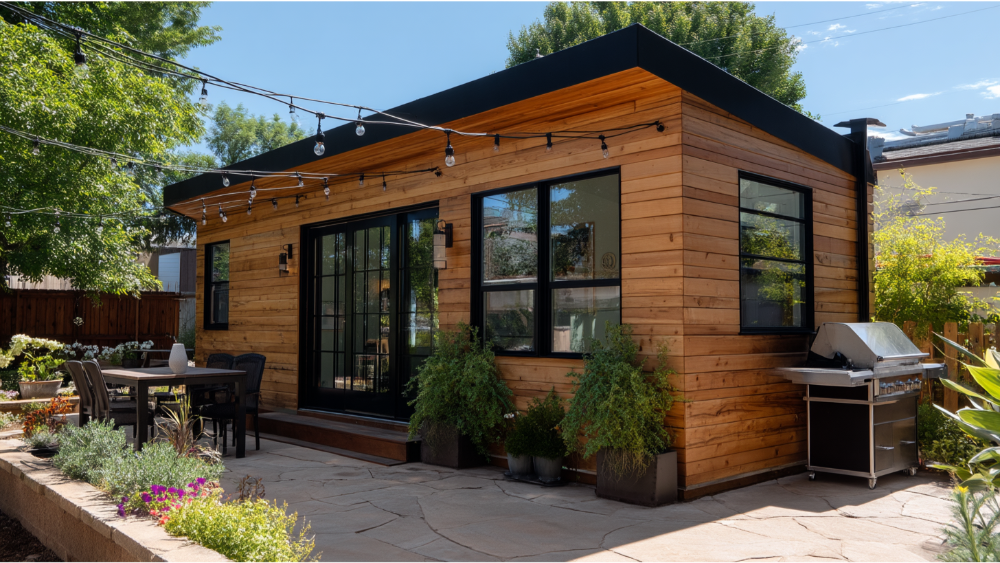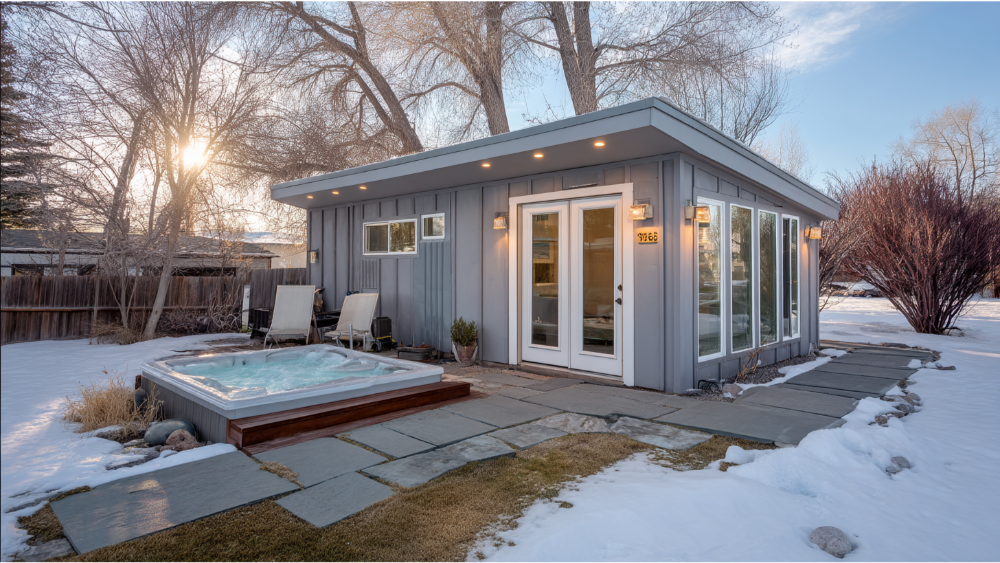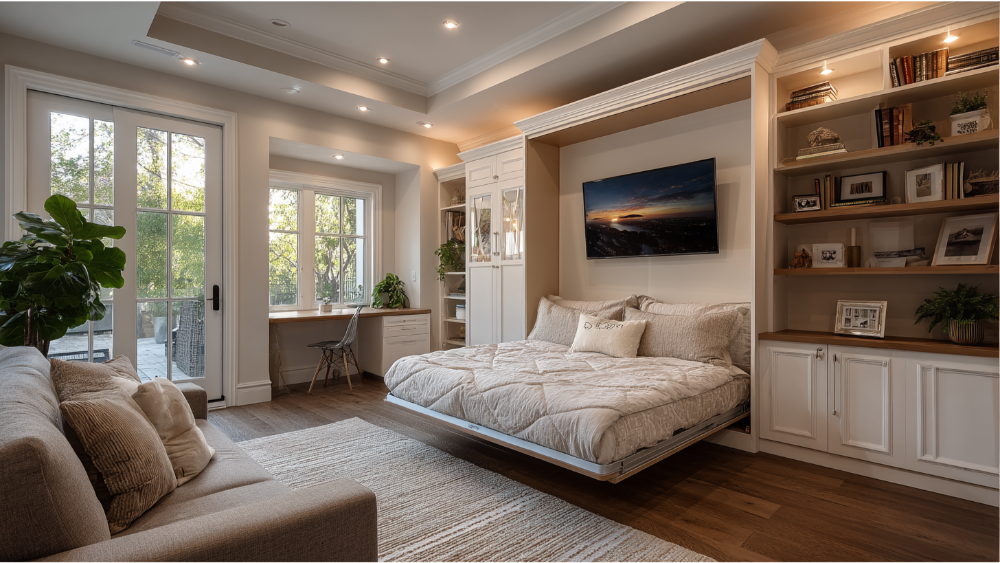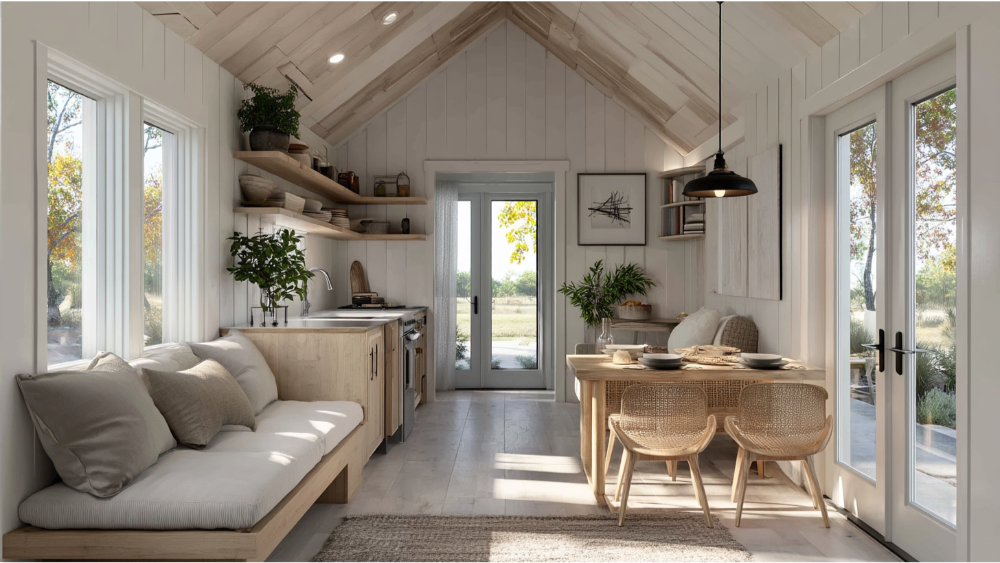In Partnership With
Contact Golden State ADUs
Drop us a line! We look forward to discussing your next project with you!
Cut the chase! Schedule a face-to-face virtual meeting with us today to dive into your project's next steps.
For our returning clients, experience our streamlined, contact-free project proposal process. Simply fill out our short project questionnaire, and we'll deliver your project proposal within 72 hours.
Contact Us:
Follow Us:
The Ultimate Guide to ADU Designs in 2025: Trends, Floor Plans, and Tips for California Homeowners

- Golden State ADUs
- Comment 0
The Ultimate Guide to ADU Designs in 2025: Trends, Floor Plans, and Tips for California Homeowners
Why ADU Design Is Essential in 2025
In 2025, the demand for accessory dwelling units, or ADUs, has reached an all-time high across California. With recent changes in zoning laws, reduced permitting timelines, and skyrocketing housing costs, homeowners are turning to ADUs as a practical and attractive option to create additional living space, support family members, or generate rental income.
But not all ADUs are created equal. The success of your project hinges on thoughtful, well-executed adu designs that maximize space, comply with local regulations, and elevate your living experience. Whether you’re planning a backyard guest house, a detached in law suite, or an income-producing rental, smart design choices make all the difference.
At Golden State ADUs, we specialize in transforming residential properties into multi-functional living environments. Our team of design-build experts has crafted adu floor plans for everything from compact 400 sq ft studios to spacious 1,200 sq ft multi-bedroom in law suites. This guide explores the latest trends in adu construction, emerging adu plans, and tips to help California homeowners design the perfect accessory dwelling unit adu in 2025.
Understanding ADUs and Why They Matter

Accessory dwelling units are self-contained living areas located on the same lot as a single-family home, often complementing the primary residence. Also known as granny flats, backyard cottages, or guest houses, these units offer flexible housing solutions for changing lifestyles. ADUs typically range from 400 to 1,200 sq ft, providing one to three bedrooms, a bathroom, a kitchen, and a separate entrance.
The key advantage of ADUs is their versatility. They can serve as long-term rentals, short-term vacation housing, private retreats for aging parents, or modern living quarters for adult children. In many cases, a thoughtfully designed ADU can significantly increase the value of the main house while delivering a new source of rental income.
2025 Trends in ADU Designs
1 | Smart Space-Saving ADU Floor Plans
As homeowners look to maximize functionality and space on smaller lots, efficient adu house plans have become a top priority. Popular layouts include open floor plans that merge kitchen, dining, and living area into one cohesive space. Vertical layouts with loft bedrooms or storage above bathrooms also help conserve square footage.
Built-in storage, fold-down tables, and Murphy beds are common features in today’s smaller footprint ADUs. With clever adu floor planning, even a 500 sq ft unit can feel open, airy, and functional.
2 | Sustainable and Energy-Efficient Features
California’s energy codes and sustainability goals are driving a surge in eco-conscious adu designs. Many new units now include solar panels, tankless water heaters, energy-efficient HVAC systems, and low-flow plumbing fixtures. Passive solar design, green roofs, and reclaimed materials add aesthetic appeal while reducing the overall cost of ownership.
Designing with sustainability in mind not only reduces utility bills but can also support code compliance and align with local jurisdictions’ green building incentives.
4 | Indoor-Outdoor Living
In 2025, indoor-outdoor integration is a hallmark of modern adu design. Features such as large windows, sliding glass doors, covered patios, and rooftop decks help extend the usable living area beyond the walls of the unit. Landscape design is often part of the site plan to create privacy between the ADU and the primary residence while enhancing curb appeal.
This trend is especially relevant for detached in law suites and backyard guest houses, where outdoor connectivity improves livability without increasing square footage.
5 | Personalization and Premium Finishes
Today’s homeowners are investing in adu plans that reflect their personal style. From minimalist Scandinavian interiors to Spanish revival exteriors, there’s no shortage of aesthetic options to explore. Many custom adu floor plans now include designer tile, wood accents, stone countertops, and spa-like bathrooms to create a high-end feel in a compact space.
These upgraded features enhance the appeal of the unit for renters or guests and can elevate the overall value of the property.
How California ADU Laws Have Changed Design Possibilities

California’s evolving zoning requirements and housing laws have made ADUs more accessible than ever. Recent legislation including SB 897, AB 1033, and SB 1211 has:
- Increased the allowable height for detached ADUs
- Removed parking requirements in transit-rich areas
- Allowed for separate sale of ADUs in some cities
- Eliminated owner-occupancy mandates
- Permitted multiple units on a single property under specific conditions
These changes have expanded the scope of what’s possible with adu construction. Homeowners can now pursue larger, more flexible floor plans, accommodate extended family members, or create multiple rental units on a single lot.
Regional Design Considerations for Northern California
Sacramento and Urban Infill Areas
In urban zones like Sacramento, West Sacramento, and Elk Grove, lot sizes and setbacks can be restrictive. Here, adu house plans must be optimized for narrow spaces, privacy, and efficient use of the lot. Over-garage units, alley-facing ADUs, or vertical builds with two stories are common strategies.
Soundproofing and window placement are important in these locations to protect the living experience of both the main house and the ADU occupants.
Suburban Properties in Folsom, Roseville, and Beyond
Suburban homes often offer more land to work with, allowing for more spacious adu floor plans and creative layouts. Two-bedroom ADUs with full kitchens and private patios are popular in these areas, offering a residential feel with complete independence.
Homeowners here often use ADUs for long-term guests or as full-time residences for family members seeking privacy and proximity.
Aging in Place and Multigenerational Living
As more families live under one roof, accessible ADU designs are gaining popularity. Universal design elements like zero-step entries, wide doorways, ADA-compliant bathrooms, and single-story layouts make ADUs ideal for elderly parents or anyone with mobility challenges.
Multigenerational ADUs that connect to the main home with a breezeway or shared courtyard are becoming more common across California’s residential properties.
Custom vs. Prefab ADU Plans: What to Know in 2025

Custom adu house plans allow homeowners to tailor every detail to their site, needs, and style preferences. From selecting the layout and exterior materials to designing a unique interior finish, custom designs offer full control. They are particularly well-suited for irregular lots, steep slopes, or when matching the aesthetic of the main home is essential.
Prefab ADUs, on the other hand, offer faster build times and often lower design fees. These units arrive fully built or as panels to be assembled onsite, with various options of standard adu floor plans. While they offer less flexibility, many homeowners find prefab models ideal for rental income or guest housing with a streamlined permitting process.
At Golden State ADUs, we help clients determine which option best suits their location, goals, and budget.
Cost Considerations: Budgeting for Design and Construction
ADU design and construction costs in 2025 depend on several factors including size, finish level, site complexity, and whether the unit is custom or prefab. Here’s a general guide:
- Garage Conversion: $100,000 to $250,000
- Detached Custom ADU: $200,000 to $400,000+
- Prefab ADU: $95,000 to $300,000
Design fees vary based on the complexity of the floor plan, engineering needs, and city-specific code compliance requirements. Other factors impacting the overall cost include utility connections, excavation, and foundation work.
To control costs without sacrificing quality, homeowners can explore value-engineered options such as polished concrete floors, durable composite siding, and energy-efficient appliances that deliver long-term savings.
Real Examples from Golden State ADUs

1-Bedroom Guest House in East Sacramento
A 620 sq ft detached unit was designed to serve as a rental property with a private entrance, vaulted ceilings, and an open floor plan. The large living area included a compact kitchen and modern bath, all finished with warm wood tones and custom tile.
Garage Conversion in Folsom
An underutilized two-car garage was converted into a 540 sq ft ADU with one bedroom, a full bathroom, and a kitchen. Skylights and high ceilings enhanced the space, while a private entry maintained separation from the main house.
Aging-in-Place Suite in Carmichael
This 800 sq ft in law suite was built for aging parents and included universal design features such as a walk-in shower, no-step entry, and wide hallways. The site plan included a shared garden space between the main residence and the ADU.
How to Start the ADU Design Process
Starting your ADU journey begins with understanding your site, budget, and goals. At Golden State ADUs, we begin each project with a free consultation, site plan evaluation, and zoning review. From there, our in-house design team creates personalized adu floor plans tailored to your location and specific needs.
We manage the entire permitting process, coordinate with local jurisdictions, and handle construction from foundation to finish. Whether you’re building a 400 sq ft guest house or a 1,200 sq ft detached rental, our full-service approach simplifies every step.
Frequently Asked ADU Designs Questions
How long does it take to design and build an ADU?
Depending on the complexity of your project and your city’s permitting process, the design and construction timeline typically ranges from 4 to 8 months.
What are the most common ADU layouts?
The most requested adu plans include one-bedroom units with open living space and full kitchens, as well as two-bedroom layouts for multigenerational use or rental income.
Can I build a second story?
Yes, zoning regulations in many cities allow for two-story ADUs, especially under new state housing laws like SB 897.
Do I need a building permit for an ADU?
Yes, all ADUs require a building permit and must comply with local zoning requirements and building codes. Our team manages this process for you.
Will an ADU increase my property value?
Yes. A well-designed ADU can increase your property’s value by providing additional living space and creating rental income opportunities.
Ready to Design Your Dream ADU?
Your ADU should be more than just a structure. It should enhance your property, support your lifestyle, and offer lasting value. Whether you need a quiet home office, a private guest suite, or a high-performing rental, our expert team at Golden State ADUs is here to help.
Contact us today to schedule your design consultation and take the first step toward bringing your dream ADU to life.

